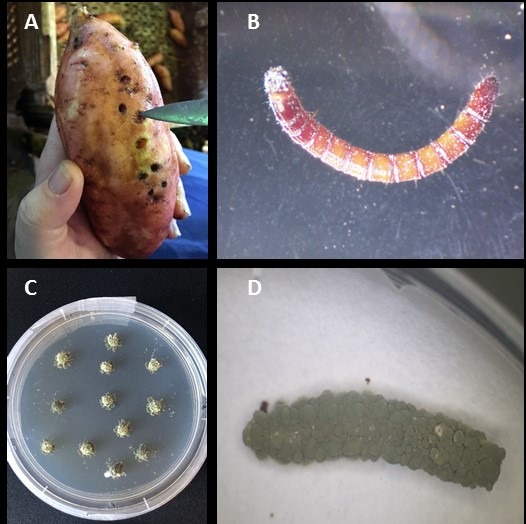

Biological control of wireworm in sweetpotato, TropAg
November 9, 2019
The Crawford Fund’s Queensland Committee has again partnered with TropAg2019 to assist 10 young researchers from developing countries attend and present their science at this international conference which will be held in Brisbane from 11-13 November 2019.
Successful candidates were chosen by a selection panel made up of representatives of The Crawford Fund and the TropAg2019 conference organisers, based on submitted abstracts of their research.
In the lead-up to the conference we will be publishing short blog posts written by the young researchers about their work. Here is the ninth blog.
By Sudhan Shah, University of Southern Queensland
The control of soil borne insects can be challenging because they often have a cryptic nature and become hard to directly target with insecticides. Wireworm, a coleopteran pest of sweetpotato, causes feeding holes on storage roots, which devalues the product and, in some cases, makes roots unsaleable.
Synthetic insecticides are the first line of defence to wireworms in Australian sweetpotato. However, the development of insecticide resistance and concerns over environmental safety of pesticides has encouraged the development of alternative management options such as biological control.
Biological control, such as the use of entomopathogenic fungi, has been incorporated into many integrated pest management programs for crops around the world. The soil fungus Metarhizium anisopliae was used in this study to manage wireworms. With the expectation that fungal propagules can multiply in the soil, the Metarhizium anisopliae conidia were formulated into a calcium alginate granule, fortified with the food supplements.
The formulated pre-sporulated granule caused significant mortalities for mealworms (a proxy for wireworms) in laboratory bioassays. Sterile and non-sterile soil were used to represent soil treated with and without soil fumigants (commonly used to reduce pest and diseases in the soil, but also affects beneficial microbes and insects) to examine the persistence of Metarhizium anisopliae. Encapsulated conidia in sterilised soils produced significantly more conidia than that observed in non-sterile soil. Limited fungal growth in non-sterile soils has been attributed to the microbial fungistasis, whereas the eradication of fungistasis during soil sterilisation could be the reason for why significant resporulation in sterile soils was observed. Besides soil antagonists, microbial symbionts associated with soil insects may exhibit an anti-fungal interaction, acting as a defence against insect pathogens.
Future work aims to find out what soil microbes are creating the fungistasis, and what role if any, do symbiotic microbes play in protecting the host insect against infection by Metarhizium anisopliae.





